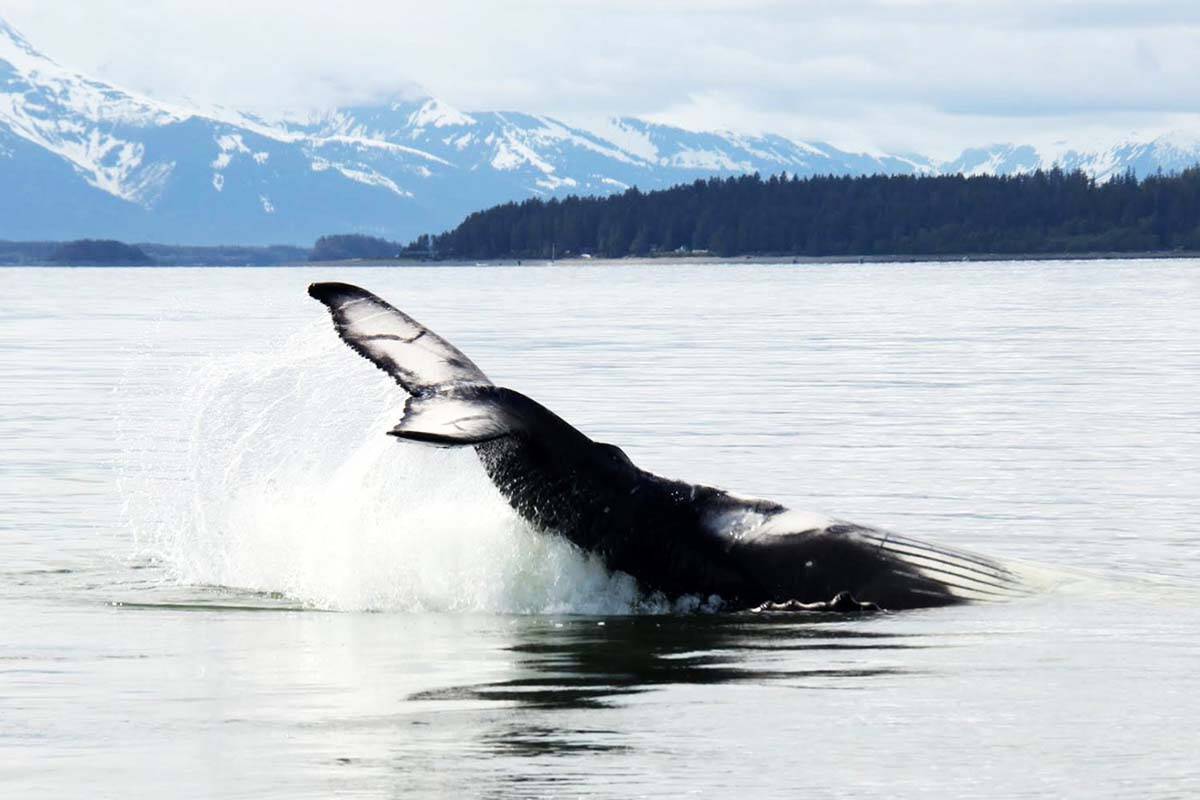By Kaitlyn Bailey, Local Journalism Initiative Reporter
The North Pacific humpback whale population is still at risk with a recommended status of “special concern”, announced the Committee on the Status of Endangered Wildlife in Canada (COSEWIC) on Dec. 8.
Since commercial whaling for humpbacks was outlawed in 1966, the North Pacific population has been slowly growing, COSEWIC stated. They added that more than 4,000 whales spend time off the coast of B.C., but there are still risks.
COSEWIC reevaluates species at risk at least every 10 years.
“If you heard what sounded like a gigantic sigh of relief this week, it may have been us,” the Marine Education and Research Society wrote on social media on Dec. 9.
North Pacific humpback whales were classified as special concern on the endangered list, which is the lowest status for wildlife classified as at risk. The only statues below it are species that do not have enough information to be properly assessed and species that are not at risk at all.
If COSEWIC determined that humpback whales were no longer at risk, the government would not have any obligation to protect them or reduce their threats, Jackie Hildering, a humpback whale researcher at the Marine Education and Research Society, explained.
Funding for research and education to reduce threats to humpback whales and resources to stop the problem of entanglement and collision are all tied to the level of protection, Hildering said. Necropsies to investigate how a whale died are also linked to their endangerment status.
Furthermore, while the population of humpback whales appears to have increased from the 1960s, it is impossible to know how many are dying, Hildering said. What we do know though, is that threats to whales, such as climate change, large vessel traffic, entanglement in fishing gear and noise, are increasing
“You’ll never know how many whales die. You can learn from the bodies that wash up, you can look at the scarring to get a sense of how often these threats might happen, but you can never know exactly how many there are in the case of whales,” Hildering said, after explaining that when the mammals die they usually sink.
“There’s certainly more than when we killed them, but it’s not just population growth that’s happening. They’re also shifting from somewhere else. So our colleagues in southeast Alaska were missing a lot of their humpbacks during the marine heatwave.”
For these reasons, she is thankful that COSEWIC at least maintained humpback’s special concern status. The decision was made in light of an acknowledgement that we do not know enough about the population amid known rising threats, is very positive and could set a precedent for other species, she said.
Hildering also notes there has been a shift in society to move away from thinking about whales as a population to caring about them as individuals. This mentality is not reflected in the species at risk list and the corresponding Species at Risk Act.
The act merely considers how many individuals are in a species and how many we can afford to lose without compromising the population’s vitality.
Each whale also benefits our environment and society.
“What I think people don’t realize is that what the whales are doing for us is they are fertilizing our ecosystem. Because they poo at the surface they are allowing there to be more algae so that there is more oxygen, there is more carbon dioxide being taken in and there’s more food for the whole ecosystem,” Hildering said.

